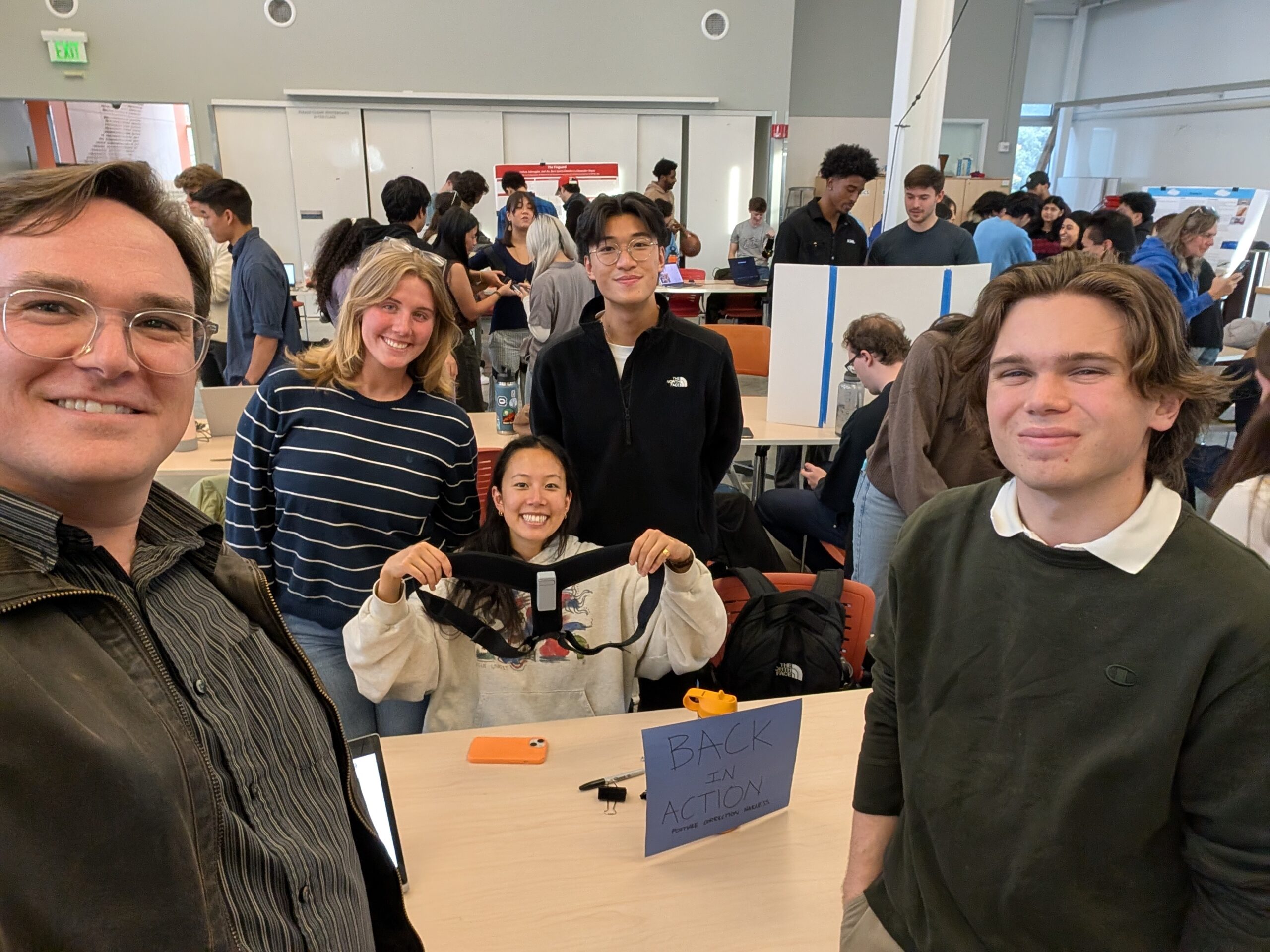For my Design for the Human Body class, I collaborated on a group project titled “Back in Action,” where we aimed to create a wearable posture correction device. Our goal was to address the widespread issue of chronic back pain caused by poor posture, which affects millions of Americans and incurs significant medical costs.
Project Overview
The project began with an in-depth analysis of the anatomy involved in maintaining posture, particularly focusing on the thoracic spine and associated muscles. We identified existing posture correction products as bulky, uncomfortable, or ineffective, leading to a clear need for a lightweight, user-friendly device that provides real-time feedback.

Design and Prototyping
Our team designed a wearable harness equipped with an IMU, ESP32 microcontroller, vibration motor, and a battery. The device senses the user’s posture and provides immediate feedback via vibrations when it detects a deviation from the set neutral position. This approach encourages users to self-correct their posture actively.
We developed prototypes through iterative testing, starting with a “looks-like” prototype for aesthetics and a “works-like” prototype using an Arduino Nano before transitioning to the ESP32 for its wireless capabilities. We refined the design to ensure comfort, adjustability, and user-friendly operation.

Contributions and Outcomes
As part of the team, I played a crucial role in the project’s development. I designed and constructed the initial Arduino proof of concept breadboard, which included a custom-made motor driver circuit and code to demonstrate that all components would work together. I researched microcontroller options and selected the Seeed Studio Xiao ESP32C6 for its compact form factor, shared IDE, and similarity with the Arduino. I then designed, created, and troubleshot the proof of concept breadboard for the ESP32C6, resolving issues related to motor driving, IMU calibration, power, and code. Additionally, I designed the schematic for the final protoboard, assembled and soldered components, wrote programming for the ESP32C6, and addressed all issues to produce a functional prototype. I also 3D printed the project enclosure and assembled and tested the final prototype to complete the project.
The project highlighted the potential for wearable technology to improve posture habits and reduce chronic back pain. Future enhancements could include integrating a mobile app to allow users to set custom thresholds and track their posture over time, enhancing the device’s versatility and user engagement.
This project not only showcased our ability to design innovative solutions for real-world health issues but also demonstrated the importance of interdisciplinary collaboration in engineering and design.
